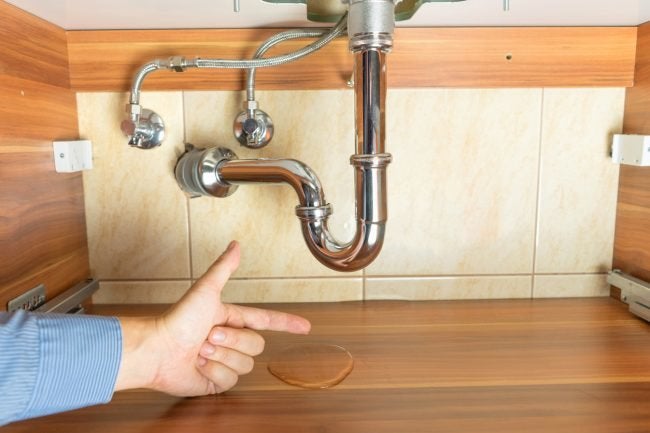Exactly how to Locate and Repair Work Water Leaks-- A Comprehensive Guide
Schedule An AppointmentJust how do you really feel about Detecting hidden plumbing leaks?

The moment you find a leakage, calling your plumber for repair work is the best option. However, some little water leaks might not show up. Right here are some hacks that help if you can not find it with your nude eyes.
Early detection of dripping water lines can mitigate a prospective calamity. Apart from saving you money, it will minimize the worry and stress.
Check Water Consumption
Analyze your water costs and track your water consumption. As the one paying it, you ought to observe if there are any kind of discrepancies. If you spot sudden changes, in spite of your consumption being the same, it indicates that you have leakages in your plumbing system. Bear in mind, your water expense should fall under the same range each month. An abrupt spike in your bill indicates a fast-moving leak.
On the other hand, a constant rise every month, even with the exact same routines, shows you have a sluggish leakage that's also gradually intensifying. Call a plumber to thoroughly examine your building, specifically if you feel a cozy area on your flooring with piping underneath.
Examine the situation as well as evaluate
House owners should make it a routine to inspect under the sink counters and even inside closets for any kind of bad odor or mold growth. These 2 warnings show a leak so punctual interest is needed. Doing regular inspections, also bi-annually, can save you from a major problem.
Take A Look At the Water Meter
Inspecting it is a proven way that aids you find leakages. If it moves, that indicates a fast-moving leakage. This means you might have a slow leakage that could even be below ground.
Asses Exterior Lines
Do not neglect to examine your outdoor water lines also. Test spigots by affixing a garden hose pipe. Needs to water seep out of the connection, you have a loose rubber gasket. Replace this and also ensure all connections are tight. If you have actually got a lawn sprinkler, it will help get it properly analyzed and also preserved annually. One small leakage can throw away tons of water and surge your water bill.
Do a Food Coloring Test
When it pertains to water usage, 30% comes from toilets. Test to see if they are running effectively. Decline specks of food shade in the tank and wait 10 minutes. If the color in some way infiltrates your dish during that time without flushing, there's a leakage between the storage tank as well as dish.
Inspect for stainings as well as compromising as many home appliances and pipelines have a life expectations. If you suspect dripping water lines in your plumbing system, don't wait for it to escalate.
The minute you discover a leak, calling your plumber for repairs is the ideal remedy. Some small water leaks may not be noticeable. Checking it is a surefire method that helps you uncover leakages. One tiny leak can lose tons of water and surge your water costs.
If you think dripping water lines in your plumbing system, do not wait for it to rise.
How to Know If Your Home Has a Hidden Leak
Water Meter Reveals Inexplicable Water Usage
If you’d like to test whether or not there’s a leak somewhere in your home, you can do this using your water meter. Here is how to conduct the test:
Don’t use any water in your home for at least 30 minutes; this also means not turning on faucets or water-using appliances.
Go outside, and check your water meter for activity.
If your water meter shows that there was activity, even though no one was using any water, this proves that there is a leak in your home.Visible Mold or Mildew Growth
Leaks behind walls create moist, dark environments that allow mold and mildew to grow and thrive. Eventually, you might see mold growth forming on the wall closest to a hidden leak.
If mold is growing in an area that receives a high amount of moisture, such as a bathroom, it may simply be an indication that better ventilation is needed. However, if you see mold growth on a wall or the ceiling in an area where you would not expect, you probably have a hidden leak.
Musty, Mildew Odor
Sometimes you might not be able to see the mold or mildew that is growing as a result of a leak. However, the smell can give the problem away just as easily. If you catch a whiff of something musty, there’s a good chance that old water is collecting somewhere in your home that you can’t see.
Stained/Warped Walls, Ceilings, or Floors
When your home soaks up water, a variety of red flags can become visible, including ceiling stains, bubbling drywall, warped walls, and sagging floors. While these issues can be caused by excess humidity, they can also be signs that a pipe or plumbing connection has started leaking behind your walls.
Inexplicably High Water Bill
After a while, you get a general sense for what your water bill should be. If you own a pool or sprinkler system, your bill will tend to be higher during summer. However, if you receive a water bill that seems especially high, and you can’t figure out what caused it, then you may have a hidden leak somewhere that’s increasing your bill.
https://www.plumbingjoint.com/blog/2019/july/how-to-know-if-your-home-has-a-hidden-leak/

We had been introduced to that article about Finding hidden leaks from an associate on a different site. Liked our write-up? Please share it. Let another person locate it. We value reading our article about Top leak detection hacks.